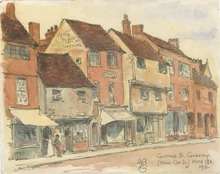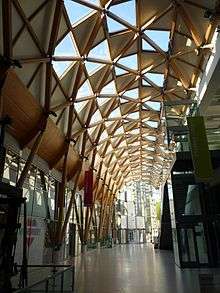Sydney John Bunney
| Sydney John Bunney | |
|---|---|
| Born | 1877 |
| Died | 1928 |
| Residence | 154 Albany Street, Earlsdon, Coventry, England |
| Nationality | English |
| Education | Coventry School of Art |
| Occupation |
|
| Style | Late Impressionist |

Sydney John Bunney (1877–1928) was an English late Impressionist artist who left over 500 drawings of early 20th-century Coventry.[1]
Little is known of Bunney's life. In 1892 he was a student at Coventry School of Art.[2] He maintained contact with the school for many years, becoming the first Secretary to the school's sketch club in April 1907.[3] He resigned from the post three years later but remained a member of the club until 1916.[4]
Bunney's work as an artist matured under the influence of William Milnes, who became the headmaster at Coventry School of Art in 1906.[5] Milnes encouraged students to follow the example of Turner by taking quick sketches under differing conditions. This, according to Milnes, would give the artist a greater understanding of nature in its various moods. Many of Coventry's medieval buildings had survived up to the early 20th century, and Milnes pointed out that many of the buildings were suitable for studies on the effect of light.[6] Several students took up this idea, including H. E. Cox, and Bunney became a prolific painter of Coventry scenes. His body of work records the city as a market town, the streets lined with red-brick and half-timbered shops and houses.[7] Most of these pieces are small and intimate works of art.
He had great difficulty in having his work exhibited at any of the big shows, such as those at the Royal Academy, and interest in his work largely waned before he was rediscovered in the late 20th century.[8]
Bunney became a cashier at the Auto Machinery Company Limited in Coventry and in his later years lived at 154 Albany Road, Earlsdon.[9]
